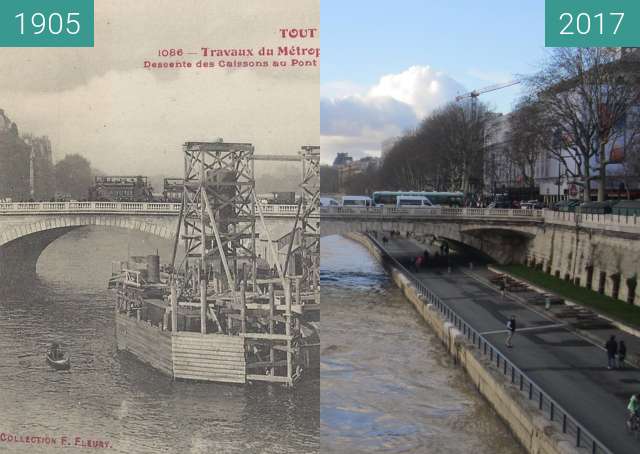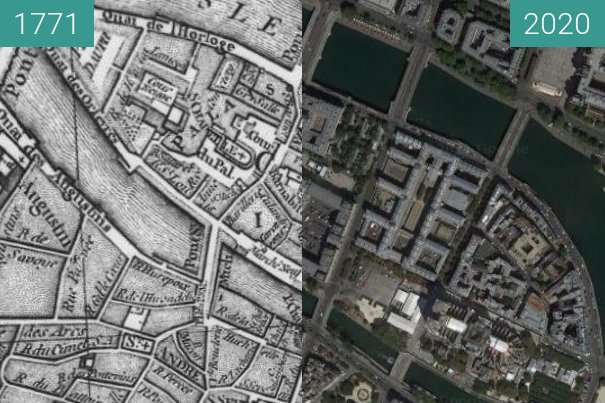Pont Notre-Dame (Great Flood)
Pont Notre-Dame (Grande Inondation)
© anonym
FRA
à proximité de Paris
Télécharge images...










The Pont Notre-Dame at the time of the Great Flood of January 1910, in which the Seine rose 8 m above the normal level.
The Pont Notre-Dame spans the great arm of the Seine and is regarded as the oldest bridge in Paris, though not in its present form. The old bridge of 1853 led to a large number of marine casualties and was therefore replaced in 1919 by a metal construction, which remains unchanged today.
Le pont Notre-Dame lors de la grande inondation de janvier 1910, dans laquelle la Seine s'élevait à 8 m au dessus de la normale.
Le pont Notre-Dame enjambe le grand bras de la Seine et est considéré comme le plus vieux pont de Paris, mais pas dans sa forme actuelle. L'ancien pont de 1853 a fait de nombreuses victimes en mer et a donc été remplacé en 1919 par une construction en métal, qui reste inchangé aujourd'hui.